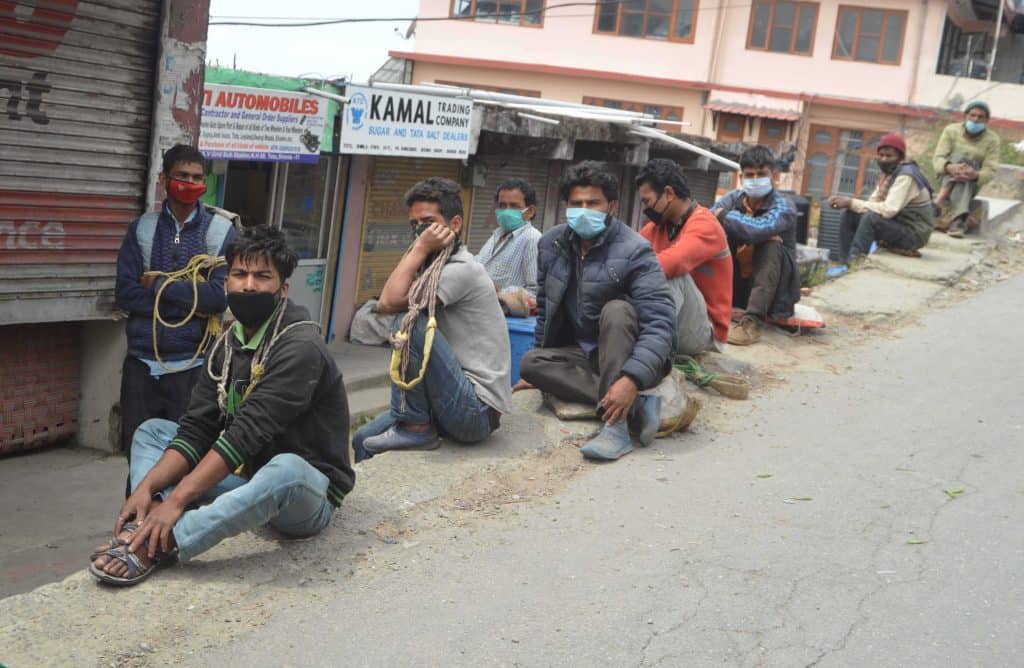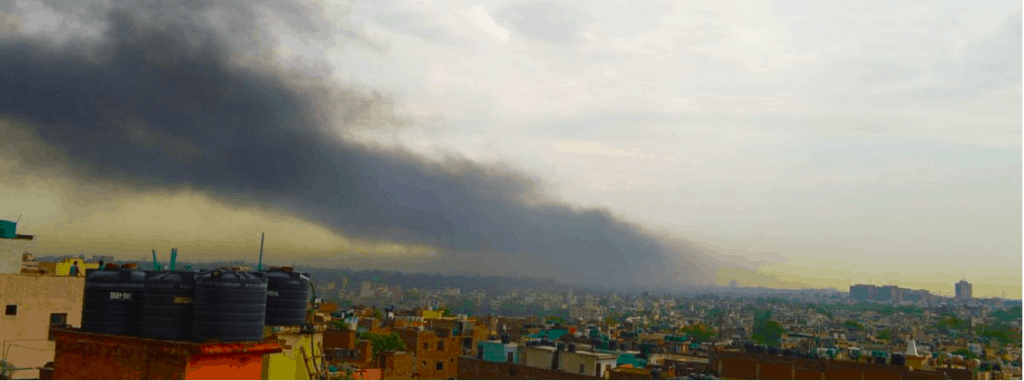O Delhie Mahra Pahda ra dil Shimla, mahra desha ra dil, o delhie, mahre desha ra dil Shimla
—-A pahari dialect song sung across the Himachal, meaning: “hey Delhi, the heart of the mountains is Shimla, hey Delhi, our Nations heart is also Shimla”.
The first reaction was one of joy and pride. For one who has lived there and served for five years as its deputy mayor, Shimla’s number one all-India ranking in the Ease of Living (EOL) index recently released by the union government in the less than one million population category, sounded stupendous.
But it was not long before the mind began to look at the entire exercise critically. Particularly as Shimla’s residents do not believe that their lives were the easiest. COVID, no doubt, was one of the reasons for the citizen’s sceptical reaction to the index.
But more important was the question: if Shimla was number one, what kind of lives and livelihoods do their counterparts elsewhere have?
Even the minister representing the town found it hard to take the index seriously. Raja Bhasin, author and noted historian of Shimla, wrote a lengthy piece in a regional daily decrying this whole exercise. And some friends in Bengaluru whom I spoke to were quite surprised about their city being adjudged the best EOL city in the million-plus population category.
Why is it that people’s reactions are so diametrically opposite to the results of this data-driven EoL index? In my view, the most probable reason is that the survey of citizens as part of this exercise exposed a major fault-line in the official EoL matrix. Cities adjudged to be among the easiest to live in by the index had ranked quite poorly in the citizens’ survey.
The reason could be that the top-ranked cities (most of the top 10 are also designated smart cities) were the worst hit by reverse migration. In Shimla for instance, an MLA had to sit outside the deputy commissioner’s office to ensure that rations were properly distributed to the poor and migrant workers.

Similarly, the tourist industry, the major source of livelihoods for a majority of the people in the hill town, was completely smashed by the pandemic and lockdown, causing a huge decline in employment and incomes. Likewise, the Shimla Municipal Corporation served sanitation bills worth thousands of rupees to hospitality establishments despite the fact that they had been closed for months.
Read more: Yet another plan to regulate traffic in Shimla, but will it work?
It was beyond comprehension of the local population how all this translated into them having an easy life.
What is Ease of Living
Let us first understand what this EoL index is all about. The index, covering 111 cities, was released on March 4th by the union ministry of housing and urban affairs. According to the list, two sets of cities were enumerated in the period January 2020 to March 20th, 2020, well before the pandemic and lockdown set it. These sets were cities above one million population and those less than that.
The cities were evaluated under four pillars (i) Quality of life (ii) Economic ability of the cities, (iii) Sustainability and (iv) Citizens perception survey.
There were 13 other categories for further evaluation education, health, housing & shelter, WASH & SWM, safety and security, recreation, economic development, economic opportunities, environment, green spaces, energy consumption and city resilience. Plus 49 more indicators which were studied in arriving at the final ranking.
‘Ease of Living’ is a term widely used in urban policy and programming, but has no standard definition. For some, it is fundamentally tied to physical amenities such as water supply, solid waste management, parks and green space etc. For others, it relates to cultural offerings, career opportunities, economic dynamism or safety.
Charles Landry, an author with an international recognition on imagining creativity in urban change, in his book The Art of City Making has an interesting definition of a city and thus comprising ease of living as well:
The city is a multi-faceted entity. It is an economic structure-an economy; it is a community of people-a society; it is a designed environment-an artefact; and it is a natural environment-an ecosystem.
And it is all four of these, economy, society, artefact and ecosystem governed by an agreed set of rules-a polity. Its inner engine or animating force, however, is its culture. Culture–things we find important, beliefs and habits gives the city its distinctiveness, its flavour, tone and patina.
There are of course several other ways of defining what makes a city where its people have a better life, livelihoods and creativity, Like how much of a participatory role do its citizens have in decision making.
The “Right to the City”, as propounded by Henri Lefebvre, a French sociologist who pioneered concepts like production of social space, dialectics, alienation etc., in the urban realm and staunchly supported by David Harvey, an anthropologist and economic geographer, is to reclaim city spaces as part of the planning process. And its democratisation.
Read more: Whose cities are these and how smart will they be?
What better occasion to remember the concepts of participatory and ‘reclaiming urban spaces’ than to commemorate the 150th anniversary of the Paris Commune which took form on March 18, 1871. The Commune members had then brought in imaginative legislation that even today dominates citizens’ ambition everywhere on ‘what a city should be’. Education was made free, child labour abolished, establishing progressive secular social democracy and remission of rent during the period the commune laid siege to Paris.
Today, in the wake of the total lockdown to contain the pandemic, ‘remission of rent’ was an important relief measure which the people sought. The US allowed this for its citizens. But not in India.
Also, given that the survey exercise was finished by March 20, five days before the nationwide lockdown was imposed, this factor was not taken into account. Resilience and sustainability are important ingredients of the EoL matrix. But though the final figures were released a year after lockdown, no attempt was made to update figures for these issues in the wake of the pandemic. Which render the figures assigned to them in the study meaningless.
Subjectivity drives decision-making
Obviously, their own subjective agendas drove this EOL index exercise for both the ministry of housing and urban affairs and their consultant, Institute for Competitiveness (IfC). To city one glaring omission, the need to include the mandate of Sustainable Development Goals (SDGs) while working out the EoL index was not even considered.

This government considers cities to be “engines of growth” and competitiveness, which is the main driver of the city’s planning and implementation processes. Cities are treated as entrepreneurs and those fulfilling this criteria are the ones most loved by the ministry. Various government documents including the 15th Finance Commission report, all advocate this same principle–transforming cities into competitive places, where user charges and economic sustainability are the two bedrock principles, not empowering citizens and sustainability.
Read more: 15th Finance Commission: Ignoring lessons from the pandemic
The philosophy of the consultant, IfC, is not hidden. Michael Porter, founder and pioneer of this group vociferously advocates in his writings and videos that the goal of the institute is to “reinforce capitalism” in the cities. Reinforcing the values of capitalism is one of this group’s key tasks as a knowledge consultancy.
John Closs, the then executive director of UN Habitat III in Quito, the capital of Ecuador, at a World Habitat conference in October 2016, kept on reminding the gathering, of which I was also a part, to go back to the basics of planning and shed the laissez-faire method of city development. Not only is it extremely exclusive, where the interests of large transnational corporations are secured, but it also widens the gap between the people and makes city spaces extremely iniquitous, argued Closs. But we in India continue to treat cities as spaces of economic activity and a business propeller, without noticing the massive damage that is happening to the environment and the livelihoods of people.
Then what are the cities the EoL index ranked for? Many people, especially those linked with urban think tanks like the National Institute of Urban Affairs (NIUA) would not openly say so, owing to their engagement and linkage with the funding institutions, some of which are controlled by the government. But if asked privately, they are largely unequivocal in condemning this entire exercise. They say that this matrix and the end result is to suggest to the large corporations that the top-ranking cities are the best places to invest in.
Since the matrix is data-driven, and most investments are to make command centres and so on, these rankings help these companies have a clearer vision for their investments. Citizen empowerment and voices have no role in this. Nor the need to devise ways and mechanisms where the ownership of the city is reclaimed by its residents.
Read more:
Great TP.
As a prudent Administrator, act to improve NCR, our eg to whole world.
It’s in a deplorable situation with 7 landfills, becoming a BGP ie Bio Gas plant.
34 nallah rivulets, and main 3 majors ie Njfgrh, Okhl, Yamuna (!).offer the variety in bio diversity..
Now a Rapid EIA can be done to assess, world region… w wshs for ” pari bortahaan “